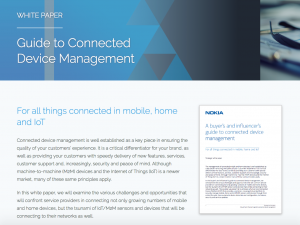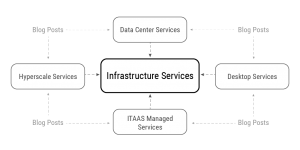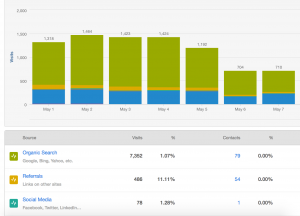
By now, you've probably heard the buzz about "growth hacking." It sounds catchy, but it's no magic — it's more of a data-driven science experiment. So what are growth hacking strategies, and how can this method grow your B2B technology company?
Growth hacking is a process of rapid experimentation across marketing channels and product development to identify the most effective, efficient ways to grow a business. – Wikipedia
 There are many growth hacking strategies that involve PR investment or paid campaigns. And plenty of growth hacking advice is for B2C companies, focused on generating consumer buzz.
There are many growth hacking strategies that involve PR investment or paid campaigns. And plenty of growth hacking advice is for B2C companies, focused on generating consumer buzz.
But growth hacking can be a fantastic opportunity for a B2B technology marketer, too. Here are 4 growth hacking strategies you can use today to grow your lead generation.
Do you have a landing page getting web traffic, but not really converting anyone into a B2B lead?
Use this as an opportunity to replace your "contact us" forms with content.


As you can see above, content here is more enticing than a simple "contact form" for most of your website pages.
But what kind of content? In the B2B technology space, your audience has plenty of questions. What are the major benefits of using your product or service? What about the specs?
Put together a simple white paper, a case study, a spec sheet, or even a company capabilities brochure.
Then, gate this content offer on your landing page, in place of a "contact us" form. You will generate more leads, and also have a starting point for a future sales conversation.
SEO is the best growth hacking strategy of them all for technology marketing. Why? Because you are getting more traction from people who are already inquiring about your product or service.
For a long-term SEO boost, create a series of landing pages around keywords that define your industry. For example, "Infrastructure services" and "data center services." Make sure these pages are optimized, and that they have ample content to be crawled in search.

Then, make sure the most important pages are located in your top-level navigation: The main menu in your website header. In this above example, our main "hub" would be "infrastructure services," and the other landing pages act as related spokes.
Finally, take the opportunity to link back to one or several of these landing pages in every blog post, website page, and website footer.
This strategy builds your SEO authority through semantic keywords, which show Google you are highly authoritative around a particular topic and all the keywords that support it.
Google gets smarter every day. And with growing artificial intelligence capabilities, Google will now give sites a boost that create a series of pages around topics — not just match keyword-for-keyword.
Microdata is a coding language that tells search engine crawlers exactly what your content is all about.
Maybe you've seen "rich snippets" in your Google searches. These may include pictures, review stars, or writer bios.

And as a technology marketing strategy, microdata will increase your click-through rates and help you stand out in search.
Ask your developer to incorporate the Schema microdata language into your pages, especially for any product pages, events, or reviews. You can then test out your changes with Google's Rich Snippets Testing Tool.
You have a great idea for a new content campaign. But where should you publish and promote it?
To get the most bang for your buck, don't rely on guess work.
Instead, view a sources report to see which channels have the highest conversion rates. You can use a tool like HubSpot (like we did below), or organize a new Google Analytics report to track conversions per source.
 With this data, we might choose to invest our next campaign in a referral source. Going even deeper, we could identify which referral source converts the best-quality leads.
With this data, we might choose to invest our next campaign in a referral source. Going even deeper, we could identify which referral source converts the best-quality leads.
Why not traffic? Because conversion rate is the true metric of growth hacking. And website engagement or traffic doesn't really grow your technology company — only generating qualified B2B leads can do that.
So plan a campaign around your best conversion rates.
If referral traffic (aka backlinks) are your best converters, shoot for a guest blog post on a tech publication in your industry. If social media is a high converter, invest plenty of time in promoting your campaign there. Even better, focus only on the channels (like LinkedIn or Twitter) that bring in qualified leads.
Keep in mind that growth hacking is more of a mindset — not a hard-and-fast manual or rulebook. So work lean, test your results, and keep best practices in mind to identify the best growth hacking strategies for your tech company. Check out these B2B statistics and trends for more B2B tips!
Sources
https://en.wikipedia.org/wiki/Growth_hacking
https://www.google.com/webmasters/tools/richsnippets
by Jonathan Franchell, CEO of Ironpaper - For more tips and hacks: Need to remove a new line after h1 tags? Both web designers and SEO practitioners need to employ headline tags: H1, H2, H3 in several ways to improve web page structure and tag...

The marketing industry is transforming significantly due to generative AI and increasing market complexity. Gartner's prediction of a 25% decline in traditional search traffic suggests that the era of search engines is dying. AI tools, particularly...

The Crowded Arena of the IT Marketplace Updated December 2024 The Information Technology (IT) landscape is experiencing rapid growth and intensifying competition. IT spending is projected to reach nearly 5.1 trillion U.S. dollars in 2024, a...

Updated December, 2024 The field of digital marketing is evolving rapidly in response to new technology and changing buyer expectations. To help career-minded marketers, we’ve rounded up the top 10 skills needed to succeed in the field. These are...
